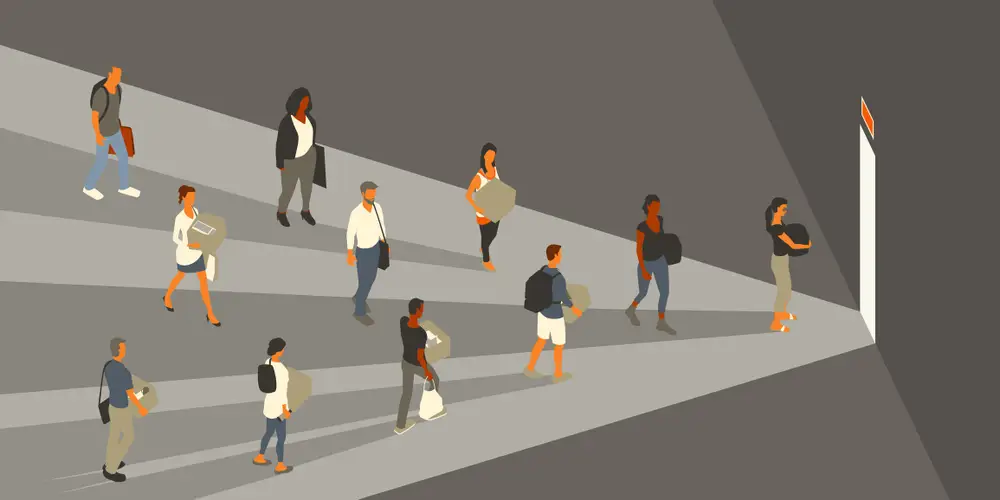Americans running out of unemployment benefits and part-time jobs at record levels point to a recession coming, economist says

Developments in the labor market show that the US economy isn’t on solid footing, according to Danielle DiMartino Booth.
The veteran forecaster and QI Research founder pointed to continued signs of weakness in the US job market, zooming in on a few key areas that are flashing signs of trouble.
Booth said that more workers who once qualified for unemployment insurance are now rolling off of their benefits. Workers in most states have 26 weeks of paid unemployment benefits, but according to the Bureau of Labor Statistics, 21% of workers are now taking more than 27 weeks to find a new job, up 3% from last year.
The average unemployment duration in the US climbed to 21 weeks in September, government data shows.
The second factor is the number of part-time workers in the US, which has climbed to an all-time high and suggests that the hiring picture isn’t as strong as may appear. The number of employees that usually work part-time climbed to 28.2 million in August, the highest number since the government began recording the data in the 1960s, BLS data shows.
“We’re not seeing these people pour into the unemployment claims pool,” Booth said in a recent interview with CNBC, attributing many of the part-time jobs to the gig economy, as out-of-work Americans may turn to platforms like Uber or other services in order to keep money coming in.
“Much different economy than we saw in 2007, 2008, because the gig economy has exploded in that period,” she added.
Weakness in the job market could later translate into consumer weakness, one of the economy’s chief concerns, Booth predicted. Fed economists already have their eye on weaker consumer spending, with consumption falling or remaining flat in most Fed Districts, according to the central bank’s latest Beige Book.
Lower consumption already appears to be having an effect on key industries. The manufacturing sector contracted for 21 out of the last 22 months, according to the Institute of Supply Management, while inventory grew. The housing market, where activity has been suppressed over the last two years, also saw existing home sales drop another 2.5% in August, per the National Association of Realtors.
Investors could see more signs of economic weakening with next quarter’s GDP figures, Booth said, which are set to roll out at the end of the week.
The economy is expected to have grown nearly 3% last quarter, matching the pace in the second quarter of 2024, according to the latest Atlanta Fed GDPNow reading. But GDP figures could be later revised down, Booth noted, pointing to a recent revision that showed the economy added nearly a million fewer jobs than expected in the year leading up to March 2024.
Booth has been warning of a recession for months despite most of Wall Street warming up to the prospect of a soft landing. Previously, she made the case that the US economy was already in a recession despite continuing to grow in 2023 and 2024, pointing to continued weakness in the job market.






